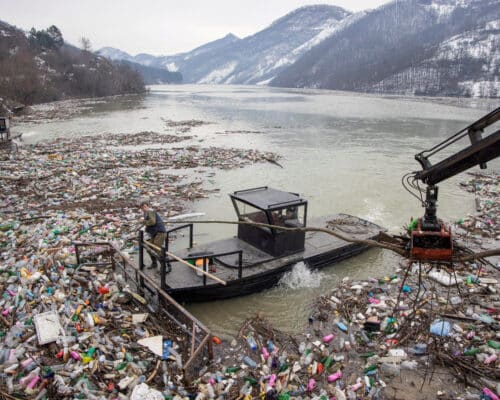LNG Remains Too Volatile for India’s Energy Sector
Photo by Exposure Visuals
20 December 2022 – by Tim Daiss Comments (0)
LNG in India – Energy Hopes
India has been pegging its energy hopes on imported LNG. For his part, Indian Prime Minister Narendra Modi has declared several times over the past few years that the country would become a natural gas-based economy.
As such, India started building out LNG terminals and infrastructure. It aimed to take its gas usage in the energy mix from 6.5% to at least 15% in just a few years.
LNG Terminals in India
By the start of 2022, India was already operating six land-based LNG import terminals. These are located in Dahej, Hazira, Dabhol, Kochi, Ennore and Mundra. LNG terminal at Kochi is the biggest facility of it’s kind. These have a combined nameplate capacity of about 42.7 million tonnes per annum (mtpa). The target was to reach a capacity of over 75 mtpa by 2030.
LNG Sector in India – Fourth Largest Importer of Liquefied Natural Gas
India has become the world’s fourth-largest importer of super-cooled fuel after Japan, China and South Korea.
The country aimed to trim its overreliance on coal in its power sector by importing gas. Over 80% of India’s energy needs are met by three fuels: coal, oil and solid biomass.
However, given that gas emits around half the greenhouse gas (GHG) emissions as coal, when used for power generation, it’s a pivot with considerable climate and economic risks. As a result, India is the third-largest global emitter of CO2. This is despite its low per-capita carbon emissions.
Cost-prohibitive LNG Price in India
Soon after the war began in Ukraine, gas prices hit record highs, casting even more doubt on India’s LNG plans. The country’s LNG imports are set to drop this year by around 12%, according to a report by S&P Global. However, the report adds that India still has to procure LNG from the spot market, adding even more pricing headwinds.
Spot purchases prices for LNG in the Asia-Pacific region breached the cost-prohibitive USD 100/MMBtu price point in March. They have pared gains and are now trending in the mid-USD 30/MMBtu range but are still well above seasonal levels.
Moreover, high gas and crude oil prices have created inflationary headwinds for India. Its inflation rate shot up this year to some 6.89% compared to the previous year.
Renewable Energy in India
However, unlike several of its neighbours in the region, including Sri Lanka, Bangladesh and Pakistan, India’s renewables development has been making progress.
The country’s solar and wind power generation capacity rose to 119 gigawatts (GW) in October. The figure has increased from 103 GW over the same period the previous year, according to estimates by Reuters’ senior market analyst John Kemp.
Kemp states that combined, solar, wind and hydropower met 25.4% of India’s electricity demand last month, compared with 22.8% in October last year.
This comes as a number of Indian conglomerates pledge to ramp up renewables investment in the country. Reliance Industries said in January that it was earmarking the equivalent of over USD 70 billion in green energy projects in India over the next 15 years. The Adani Group plans to invest some USD 70 billion in its green energy operations to become the world’s largest producer of renewable energy.
While this is a step in the right direction, at the same time, India should stop planning for more LNG import terminals and gas-to-power development. This, combined with reining in its coal consumption used for power generation, is the way forward.
However, India’s fossil fuel usage dilemma could become even more acute. India’s coal minister, Pralhad Joshi, said in November that coal would remain an important part of the country’s energy mix until at least 2040. This coal usage trajectory would keep India’s climate mitigation goals in jeopardy.
Energy Economics of Renewables
Not only will pivoting to more renewables help India reach its net-zero goals quicker, but it’s also more economically feasible.
A recent World Economic Forum report concludes that renewable energy was the world’s cheapest energy source in 2020. It also found that the cost of large-scale solar projects had plunged by 85% in a decade.
Moreover, of the renewables (mostly wind and solar) that came on stream in 2020, nearly two-thirds, some 62%, were less expensive than the cheapest new fossil fuels.
By 2020, concentrating solar power costs had dropped by some 16%. Onshore wind dropped by 13%, offshore wind by 9% and solar PV by 7%. Hence, renewable energy is on track as the cheaper energy source. It will also help to reduce the harmful GHG emissions from fossil fuel usage.
by Tim Daiss
Tim has been working in energy markets in the Asia-Pacific region for more than ten years. He was trained as an LNG and oil markets analyst and writer then switched to working in sustainable energy, including solar and wind power project financing and due diligence. He’s performed regulatory, geopolitical and market due diligence for energy projects in Vietnam, Thailand and Indonesia. He’s also worked as a consultant/advisor for US, UK and Singapore-based energy consultancies including Wood Mackenzie, Enerdata, S&P Global, KBR, Critical Resource, and others. He is the Chief Marketing Officer (CMO) for US-based lithium-sulfur EV battery start-up Bemp Research Corp.
Read more



